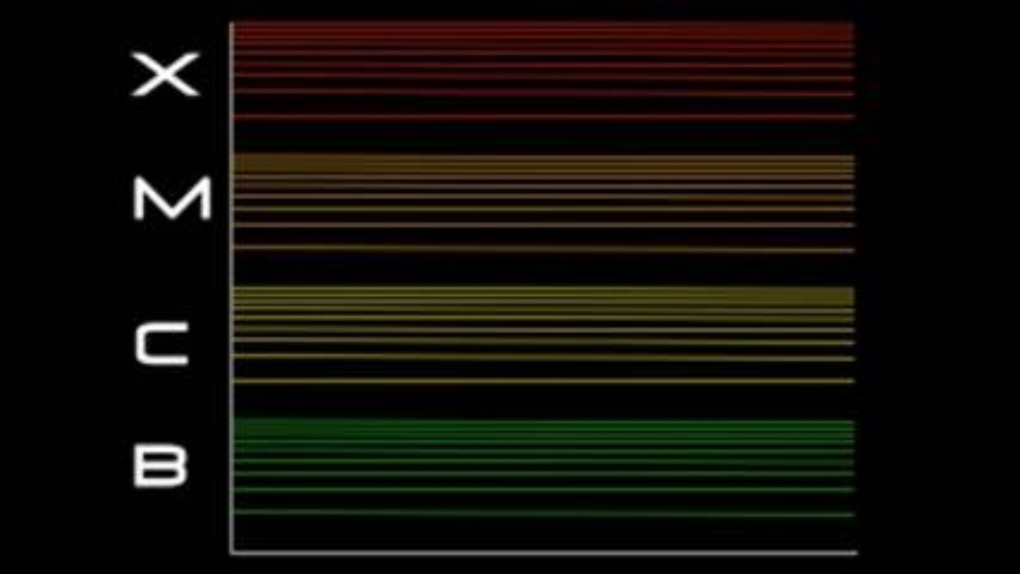The sun has been going through solar cycles for 4.6 billion years, but in May, millions of humans were able to experience an intense burst of solar activity in a way that we’ve never collectively been able to do before: through our cell phones.
But, it’s that same piece of technology, along with other vital components of our communication and power infrastructures, that can be at risk of failing in the event a major geomagnetic storm heads towards our planet.
It’s happened several times in the past, and the scientific community believes it’s not a matter of ‘if’ but ‘when’ another large space weather event or ‘solar tsunami’ is earthbound again.
As civilization grows more reliant on technology every day, are we prepared for an event even more powerful and disruptive than what was experienced in May 2024?
Solar maximum
The Sun’s magnetic field goes through an 11-year cycle in which its north and south poles switch places.
During this transition, the massive star’s magnetic field becomes more disconnected and disjointed, resulting in an increase of sunspots, solar prominences and solar flares.
We are currently in the Sun’s 25th cycle with peak sunspot activity expected in 2025.
The sunspot producing the solar flare that created the spectacular aurora display in early May. (Source: David Hoskin)“Right now, the magnetic field of the sun is totally out of whack. It’s very angry and unhappy and it’s causing a lot of magnetic field-related activity to happen,” said Phil Langill, director of the University of Calgary’s Rothney Astrophysical Observatory (RAO).
Scientists pay close attention to solar flares and Coronal Mass Ejections (CME’s), which often occur together but can happen individually.
The primary difference between the two situations are their speeds.
With CME’s, Langill explains “You get a huge amount of material that makes its way from the sun at about 30 or 40 kilometers per second. That’s like going across Calgary in one second.”
Solar flares are more energetic and rare.
A flare requires a giant explosion that happens when the sun’s magnetic field is most unstable.
“And the particles that fly away from the sun during [a flare] go 100 times faster [than a CME], in the thousands of kilometers per second.”
A prominent sun spot region now designated as AR3697, detected in early May, produced around 50 M class (medium) and X class (strong) flares and more than half a dozen CME’s.
A good chunk of the solar matter connected with that activity was on a direct collision course with earth.
 Solar flare classification. (NASA)
Solar flare classification. (NASA)
May 2024 event
The excitement among scientists, astronomers and aurora chasers was palpable in the days leading up to the May 10to 11 geomagnetic storm.
Based off the amount of flares and CME’s detected, it was anticipated to be a big spectacle in the sky.
 Forecast of May, 2024 aurora event. (NOAA)“It was forecast to be a G4 [storm], which was the first G4 forecast in 20 years,” said Chris Ratzlaff with Alberta Aurora Chasers. “And on Friday, May 10, it hit G5.”
Forecast of May, 2024 aurora event. (NOAA)“It was forecast to be a G4 [storm], which was the first G4 forecast in 20 years,” said Chris Ratzlaff with Alberta Aurora Chasers. “And on Friday, May 10, it hit G5.”
Scientists monitor both the earth and the sun’s geomagnetic fields by using a variety of measurements.
When determining the severity of an earthbound CME, you’ll often see forecasts using a G scale which ranks storm intensity from one to five, or a Planetary K-Index (Kp) which goes from one to nine plus.
 Example of G/Kp Index. (NOAA)“All of [the scales] come down to how much Earth’s geomagnetic field was disturbed,” explains Dan Welling, assistant professor, University of Michigan’s Department of Climate and Space.
Example of G/Kp Index. (NOAA)“All of [the scales] come down to how much Earth’s geomagnetic field was disturbed,” explains Dan Welling, assistant professor, University of Michigan’s Department of Climate and Space.
With a G5/Kp 9 rating, when the May storm arrived in earth’s atmosphere, it created an aurora event so vibrant and widespread it was seen as far south as Mexico.
“The other cool part about that event was that I could see the red in the aurora with my own eyes,” said Ratzlaff.
Even if you didn’t have the chance to directly witness the May aurora, odds are a family or friends captured the dazzling light show with their camera and posted it on social media.
Leading up to the massive light show though, stakeholders in the power and communication sectors were keeping a close eye on geomagnetic storm updates, hoping for the best but preparing for a worst-case situation like a “Carrington Event.”
What is a Carrington Event?
The Carrington Event happened back in September 1859 during solar cycle 10.
“It’s almost a keynote event in the planet’s geomagnetic activity,” said Ratzlaff.
Similar to what was witnessed in May 2024, this storm produced an aurora so massive it was reported to be seen in Hawaii and Bermuda.
“It was one of the most magical ejections from the sun that came straight toward the earth,” said Langill. “Huge aurora for many, many days.”
But it wasn’t just the sky that was lit up during this event.
The primary communication system was telegraph at the time and the wires were the perfect antennas to pick up the charged solar particles that had flooded into earth’s atmosphere.
“It was an event so large that it caused telegraph wires to spark and catch fire,” states Welling.
“The worry is if one of those happened today it could cause large scale blackouts that would take a long time to recover from.”
While the data is quite limited for the Carrington Event, scientists estimate that the storm was connected to an X 40-class flare.
“By comparison, the solar flares we saw for the May event were X 8.7 so much, much weaker,” said Ratzlaff.
 Solar flare classification. (NASA)It’s not the only major geomagnetic storm we have experienced.
Solar flare classification. (NASA)It’s not the only major geomagnetic storm we have experienced.
There have been several more recent events in history that continue to pose new concerns for civilization as our technology evolves.
Hydro Quebec and the Halloween event
More than a century after the Carrington Event, on March 13, 1989, millions of Canadians and Americans were briefly plunged back into the dark ages when a key power operator was shut down by a geomagnetic storm.
“We call it the Hydro Quebec event,” said Welling. “During the storm, the Hydro Quebec power grid was knocked out for nine hours leaving millions without power.”
This storm took place in solar cycle 22, and is believed to have been produced by a strong X 15-class solar flare on March 6, followed by two CME’s a few days later.
It only took 90 seconds after this storm entered earth’s atmosphere for Hydro Quebec’s power grid to go dark while the sky lit up once again in vibrant colours extending down into the southern United States.
Then, in 2003, another significant geomagnetic storm entered our atmosphere, eerily on Oct. 31.
“We call it the Halloween aurora,” said Ratzlaff. “And that was the last time we had a G5 strength aurora event.”
NASA classifies the Halloween event as the most powerful flare to hit earth on record.
“It was so powerful it overloaded the sensors measuring it,” states the NASA/Goddard Space Flight Center website. “They cut-out at X17, and the flare was later estimated to be about X45.”
“This was a big storm that had a lot of effects on the power grid, it had effects on space craft operations,” said Welling. “When researchers are looking to understand the effects of geomagnetic storms and solar storms on earth, it’s one of the first places we go to look.”
The aurora experienced in May 2024 was the first G5 scale storm since the 2003 Halloween event, but it didn’t wreak the same havoc as the one from 21 years prior.
 “This G5 event was relatively uneventful for the planet, and if we compare it to what we saw in 2003,” said Ratzlaff
“This G5 event was relatively uneventful for the planet, and if we compare it to what we saw in 2003,” said Ratzlaff
“It was much more uneventful than what saw at that time.”
There was some disturbance detected from the May event.
Some power companies in Canada detected increased harmonics, but at a manageable level.
In the precision agriculture sector, companies like John Deere also reported problems with their GPS systems.
 The active sunspot 3697 emerging from the far side of the sun. (Source: David Hoskin, Professor Emeritus Dalhousie University)The active sunspot 3697 emerging from the far side of the sun. (Source: David Hoskin, Professor Emeritus Dalhousie University)
The active sunspot 3697 emerging from the far side of the sun. (Source: David Hoskin, Professor Emeritus Dalhousie University)The active sunspot 3697 emerging from the far side of the sun. (Source: David Hoskin, Professor Emeritus Dalhousie University)
The same sun spot region that was the producer of our massive May aurora will be facing earth in early June, carrying the potential for round two of even more powerful and disruptive CME’s and flares to shoot our way.
NOTE: Stay tuned for The Dark Side of the Aurora – Part 2, in which we will look at the modern infrastructure we rely on that could be at risk in a strong geomagnetic storm, and the Canadians responsible for monitoring space weather activity under tight response times.




